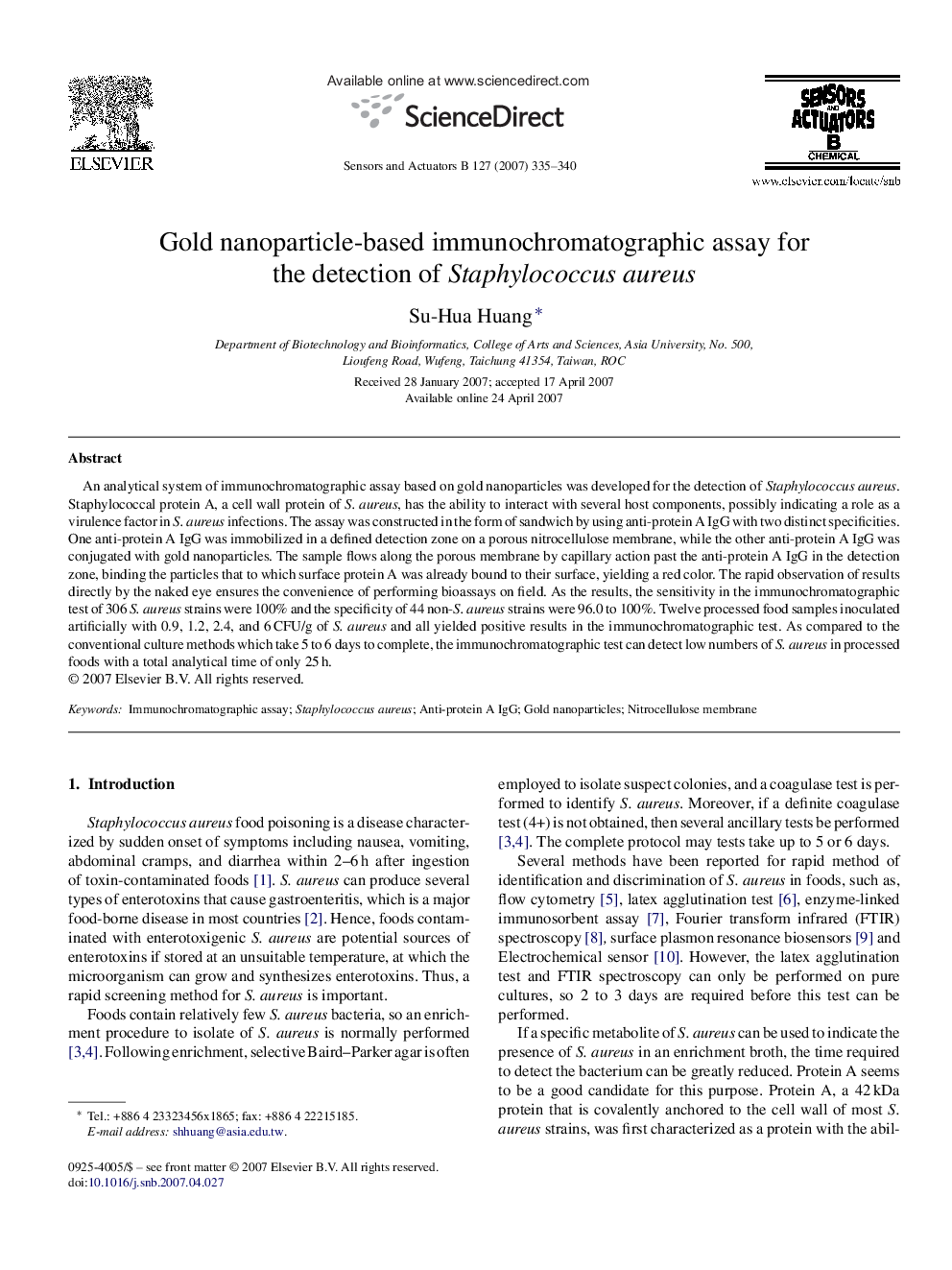| Article ID | Journal | Published Year | Pages | File Type |
|---|---|---|---|---|
| 751538 | Sensors and Actuators B: Chemical | 2007 | 6 Pages |
An analytical system of immunochromatographic assay based on gold nanoparticles was developed for the detection of Staphylococcus aureus. Staphylococcal protein A, a cell wall protein of S. aureus, has the ability to interact with several host components, possibly indicating a role as a virulence factor in S. aureus infections. The assay was constructed in the form of sandwich by using anti-protein A IgG with two distinct specificities. One anti-protein A IgG was immobilized in a defined detection zone on a porous nitrocellulose membrane, while the other anti-protein A IgG was conjugated with gold nanoparticles. The sample flows along the porous membrane by capillary action past the anti-protein A IgG in the detection zone, binding the particles that to which surface protein A was already bound to their surface, yielding a red color. The rapid observation of results directly by the naked eye ensures the convenience of performing bioassays on field. As the results, the sensitivity in the immunochromatographic test of 306 S. aureus strains were 100% and the specificity of 44 non-S. aureus strains were 96.0 to 100%. Twelve processed food samples inoculated artificially with 0.9, 1.2, 2.4, and 6 CFU/g of S. aureus and all yielded positive results in the immunochromatographic test. As compared to the conventional culture methods which take 5 to 6 days to complete, the immunochromatographic test can detect low numbers of S. aureus in processed foods with a total analytical time of only 25 h.
